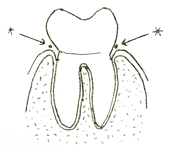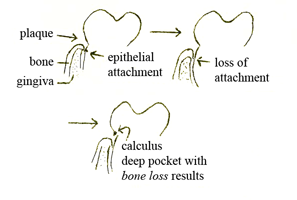CABRILLO COLLEGE - October 2, 2014
CABRILLO COLLEGE HAS ANNOUNCED PLANS TO ONLY ACCEPT DENTAL HYGIENE STUDENTS EVERY OTHER YEAR; THIS CITING BUDGET CONCERNS.
IRONICALLY THIS ANNOUNCEMENT COMES ONLY FOUR YEARS AFTER COMPLETING A WORLD CLASS INSTITUTION FOR TRAINING DENTAL HYGIENISTS!
DRU GLOVER FROM THE CABRILLO COLLEGE JUSTICE LEAGUE IS LEADING A CAMPAIGN TO HELP REINSTATE FUNDING FOR THE PROGRAM WHICH HAS HAD A LARGE PART OF ITS FUNDING CUT.
ACCORDING TO MARUERITE POWER, R.D.H. WHO WAS IN THE FIRST HYGIENE CLASS TO START AT THE NEW FACILITY IN 2010 HYGIENE STUDENTS HAD BEEN BRINGING IN LAUNDRY SOAP, PAPER AND PLASTIC BAGS, AND A LOT OF SUPPLIES WHICH THE PROGRAM COULD NOT AFFORD EVEN BACK THEN.
DR. CHRIS KEYS THINKS THAT THIS SHOULD BRING INTO SHARP FOCUS THE EXPENSE TO TRAIN DENTISTS AND DENTAL HYGIENISTS TO PROVIDE THE BEST DENTAL CARE IN THE WORLD. ACCORDING TO DR. KEYS, COSTS AT UNIVERSITY OF THE PACIFIC SCHOOL OF DENTISTRY (WHERE HE DID HIS TRAINING) TO OBTAIN A DOCTOR OF DENTAL SURGERY DEGREE ARE OVER $ 400,000 NOW.
NEWS FLASH - September 9, 2014
New research shows that proper use of toothbrushes and dental floss can reduce symptoms of chronic obstructive pulmonary disease - COPD.
Not brushing your teeth regularly and not cleaning in between each tooth can cause inflammation of gums which can bleed; allowing bacteria to enter your bloodstream.
These bacteria could infect your lungs.
Poor dental health can actually worsen COPD symptoms.
PERIODONTAL DISEASE AND RECOMMENDED ORAL HYGIENE
Periodontal disease is an inflammation of the gums and bone around teeth, (perio=around, dontal=teeth). In its early stages it is often unnoticed and is characterized by slight swelling of the gums and occasional bleeding.
Much has been learned about the cause of periodontal disease in the past ten years. Several factors have been identified and I have listed them below,
- Improper oral hygiene (brushing and flossing)
- Plaque (bacteria)
- Calculus (mineralized plaque)
- Refined foods (especially those containing table sugar, or sucrose)
Not brushing or improper brushing and flossing of the teeth results in food not being completely removed from the teeth and gums (gingiva). When brushing your teeth, the bristles should be at an angle of approximately 45° to the teeth. The toothbrush should then be moved in a circular motion and/or side to side along the gum line. This should be done both along the "inside" and the "outside" of all your teeth, The "tops" or biting surfaces of the teeth should then be scrubbed back and forth, and side to side to clean the grooves in these areas,

The toothbrush is held at a 45° angle because your teeth have a "pocket" or sulcus around them. Shown diagrammatically it looks like this:

The bristles of your toothbrush should get down Into the "pocket" and "sweep" plaque and debris out. Pockets are normally about 3mm deep and this brushing technique should clean them adequately. A SOFT toothbrush texture is recommended as it will not damage the gingiva and should keep your teeth from staining.
The technique for dental flossing is to place the floss in the space between two of your teeth, then move it UP and DOWN on each surface.

This should be done between all of your teeth. As you get the hang of flossing. It will take less and less time to thoroughly clean all of your teeth.
If the teeth and gums are not thoroughly cleaned, periodontal disease can develop. The general course of the disease process is as follows:

- Food is left along the gumline and pockets.
- Bacteria, which are normally found in the mouth, digest the food particles. The two results of this are;
- Increase in the number of bacteria. A large amount of bacteria is called Plaque. Plaque is the soft white substance sometimes scraped off teeth. If the plaque was observed under a microscope, the individual bacteria could be seen moving about.
- Secretion of acids, by the bacteria, which not only dissolves tooth enamel and causes cavities, but also dissolves certain parts of the gums and bone.
If the acids and bacteria are not quickly removed, the structure attaching the gums to the tooth will be dissolved. When the epithelial attachment is dissolved, the pocket becomes deeper. An enlarged diagram shows this.

When the depth of the pocket increases, bone destruction can also occur. Deep pockets are unhealthy for several reasons;
- It is difficult or impossible to properly clean deeper pockets with a toothbrush and floss.
- The gums and bone become inflamed, often resulting in resorption of supporting bone.
- The pockets contribute to a "vicious cycle" where calculus (a hard. rough substance) forms below the gumline and gathers more plaque. Which in turn can make the pockets deeper.
Calculus is essentially mineralized plaque. Its formation is somewhat similar to coral formation in the ocean. The plaque (living bacteria) secrete a sticky substance (dextrans) that causes it to adhere to teeth and gums. The life cycle of the average bacterium is about 24 hours. After the bacteria die, they are still attached to the tooth. New plaque (bacteria) then form on top of the dead ones and the dead bacteria gradually "fossilize"! That is, they are mineralized from substances occurring naturally in the saliva (e.g., calcium, magnesium, sodium, phosphorus). This hardened substance can form above or below the gums, and causes irritation and inflammation of the gums.
Toothbrushing and flossing seldom remove calculus. Calculus can best be removed by the dentist or dental hygienist with special instruments designed for this purpose. The best way to prevent calculus formation, is to THOROUGHLY clean your teeth (brush and floss) at least once every 24 hours. If this is done before sleeping, the teeth will be clean and free from plaque for the six to eight hours you're asleep.
Refined foods (those with lots of simple sugars) also contribute to large and rapid plaque and calculus formation. The processing of the foods enables the plaque bacteria to use them almost immediately, without having to digest them first. Thus, acid secretion and numbers of bacteria increase rapidly. It is recommended that teeth be thoroughly cleaned immediately after eating foods with a high carbohydrate content.
"GOOD SNACKS"
- Peanuts
- Popcorn
- Carrot Sticks
- Celery Sticks
- Sugarless Gum
"BAD SNACKS"
- Candy
- Gum containing sugar
- Cookies
- Crackers
- Refined breads